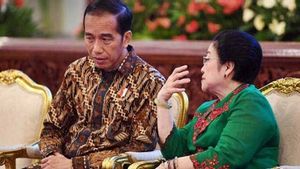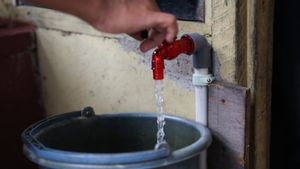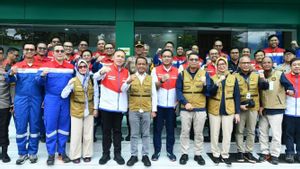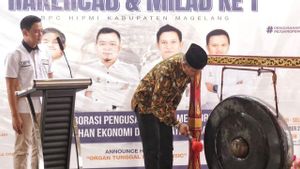JAKARTA – In the history of Indonesia today, 53 years ago, April 1, 1969, the first Five-Year Development Plan (Repelita I) was inaugurated by President Soeharto. The inauguration was carried out to develop Indonesia.
Even the presence of the Repelita project is a form of government effort that hopes for high economic growth. Repelita I was right on target. All targets can be achieved. These include providing clothing, abundant food, improving infrastructure, public housing, and employment opportunities.
The presence of the New Order (Orba) was a breath of fresh air for all Indonesian people. The unstable conditions left by the Soekarno government were handled one by one by Suharto. It's not easy. Moreover, the New Order government had to fix the complicated problem of hyperinflation which reached 650 percent. Inflation makes the price of goods, including basic necessities, increase.

New Order began to tactics. Owners of power began to change the course of the economy. From pro east to pro west. Suharto also moved quickly to form a team of experts in the field of economics from the University of California Berkeley graduates. The study became a bright spot as well as a solution to the economic problems left by the Old Order.
The team that became known as the Berkeley Mafia began to make a breakthrough. They perpetuate policies that breathe economic liberation and big markets. One of the most memorable steps is that the Berkeley Mafia made the faucet of foreign investment into Indonesia open. Therefore, Indonesia can be freed from the danger of destruction inherited from the government of the Bung Karno era.
Not only that. Suharto also continued to make breakthroughs. Improving people's livelihoods and infrastructure development are the new focuses. So that the Indonesian people are empowered, he thought. The inauguration of Repelita I also emerged as a solution.
“This Repelita l is the initial foundation for agricultural development in the New Order. The goal to be achieved is economic growth of 5% per year with the priority targets being sufficient food, sufficient clothing, infrastructure improvement, especially to support agriculture.”
"Of course, this will be followed by the expansion of employment opportunities and an increase in people's welfare. The focus of this Repelita l is the development of the agricultural sector in accordance with the aim of pursuing economic backwardness through the process of renewing the agricultural sector, because the majority of Indonesia's population still lives from agricultural products," said Annisa Ilmi Faried and Rahmad Sembiring in the book Economics Indonesia (2019).

Repelita I was inaugurated by Suharto on April 1, 1969. The goal was clear. Improving the standard of living of the Indonesian people is paramount. Infrastructure development followed soon after. As a result, the Repelita I program was a success. The target is largely achieved. From increasing food production to expanding employment opportunities.
However, that success comes at a price. Indonesia's foreign debt swelled because of it. Even the debt obtained by the New Order government has exceeded the debt made by the Old Order government. This is because the New Order government's only teaching in carrying out the Repelita I program is to use foreign capital.
"In this Repelita I, government investment is invested in business sectors that produce the greatest impact, such as agriculture, economic infrastructure, and expansion of export and import substitute industries."
“Three-quarters of the spending in Repelita I was financed by foreign loans, the amount of which swelled to US$ 877 million at the end of the period. In 1972, the new foreign debt obtained since 1966 has exceeded the expenditure when Soekarno was in power,” concluded MC Ricklefs in the book History of Modern Indonesia 1200-2004 (2005).
The English, Chinese, Japanese, Arabic, and French versions are automatically generated by the AI. So there may still be inaccuracies in translating, please always see Indonesian as our main language. (system supported by DigitalSiber.id)








